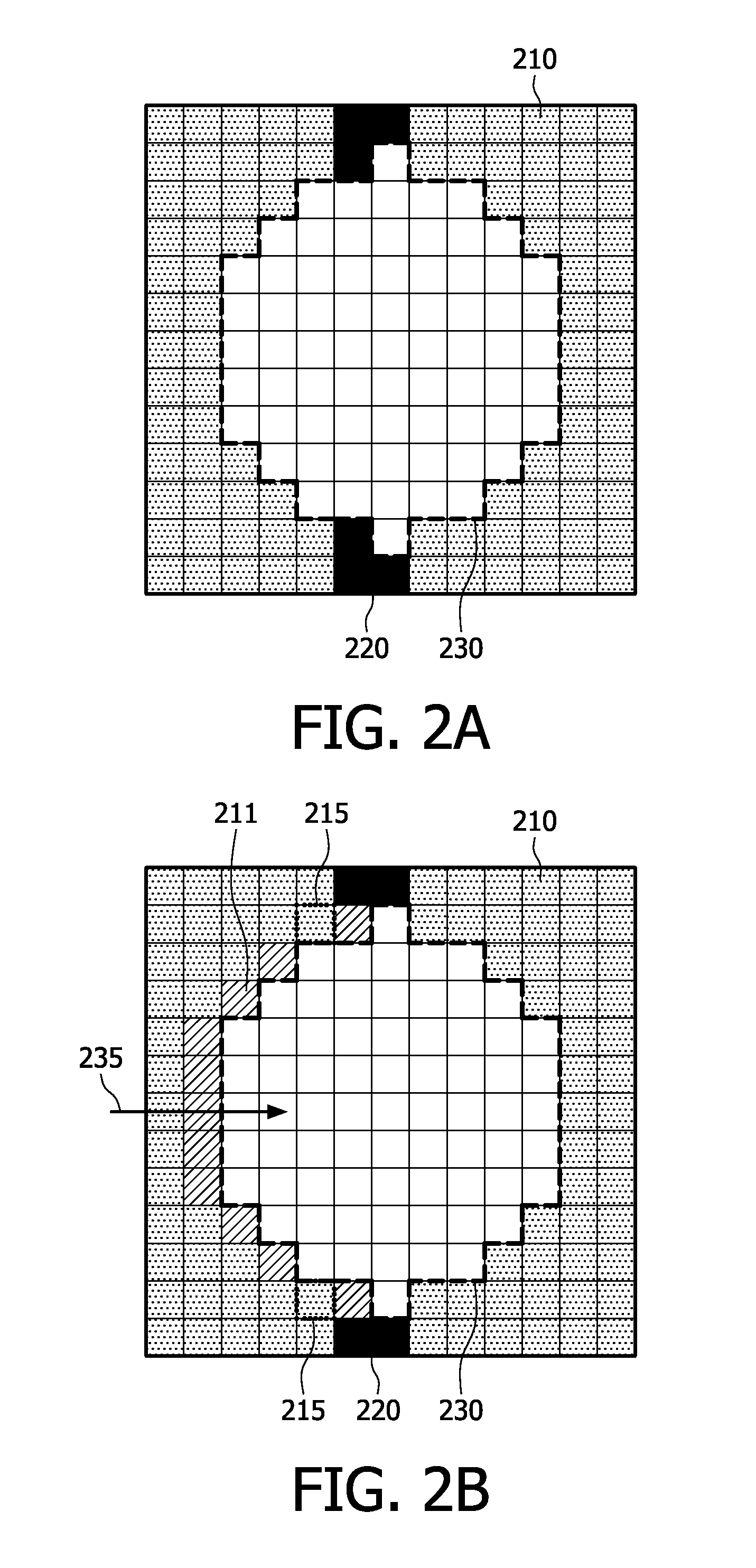Method and image-processing device for hole filling
a technology of image processing and hole filling, which is applied in the field of method and image processing device, can solve the problems of insufficiently addressed problems, inability to provide input data for certain output pixels, and inability to identify the source area of the hole, so as to prevent the propagation of inappropriate pixel values, and improve the confidence
- Summary
- Abstract
- Description
- Claims
- Application Information
AI Technical Summary
Benefits of technology
Problems solved by technology
Method used
Image
Examples
Embodiment Construction
[0039]Several applications that address the concept of hole filling are known in the world of image processing. Two of such applications have already been indicated hereinbefore, viz. filling in de-occluded areas in images for view rendering based on video information provided in the image+depth video format, and prediction of information in shift motion prediction in video compression schemes. Further alternative application areas are e.g. image restoration.
[0040]Several approaches are known to address hole filling in different manners. Such an approach is disclosed in International Patent Application WO2007 / 099465. However, these techniques generally have the drawback that they lead to a temporally stable solution. Certain embodiments of the present invention, in particular those involving blending of multiple propagation pixel values, provide a computationally simple, yet temporally stable hole-filling solution.
[0041]FIG. 1 shows a hole-filling method according to the present inv...
PUM
 Login to View More
Login to View More Abstract
Description
Claims
Application Information
 Login to View More
Login to View More - R&D
- Intellectual Property
- Life Sciences
- Materials
- Tech Scout
- Unparalleled Data Quality
- Higher Quality Content
- 60% Fewer Hallucinations
Browse by: Latest US Patents, China's latest patents, Technical Efficacy Thesaurus, Application Domain, Technology Topic, Popular Technical Reports.
© 2025 PatSnap. All rights reserved.Legal|Privacy policy|Modern Slavery Act Transparency Statement|Sitemap|About US| Contact US: help@patsnap.com



